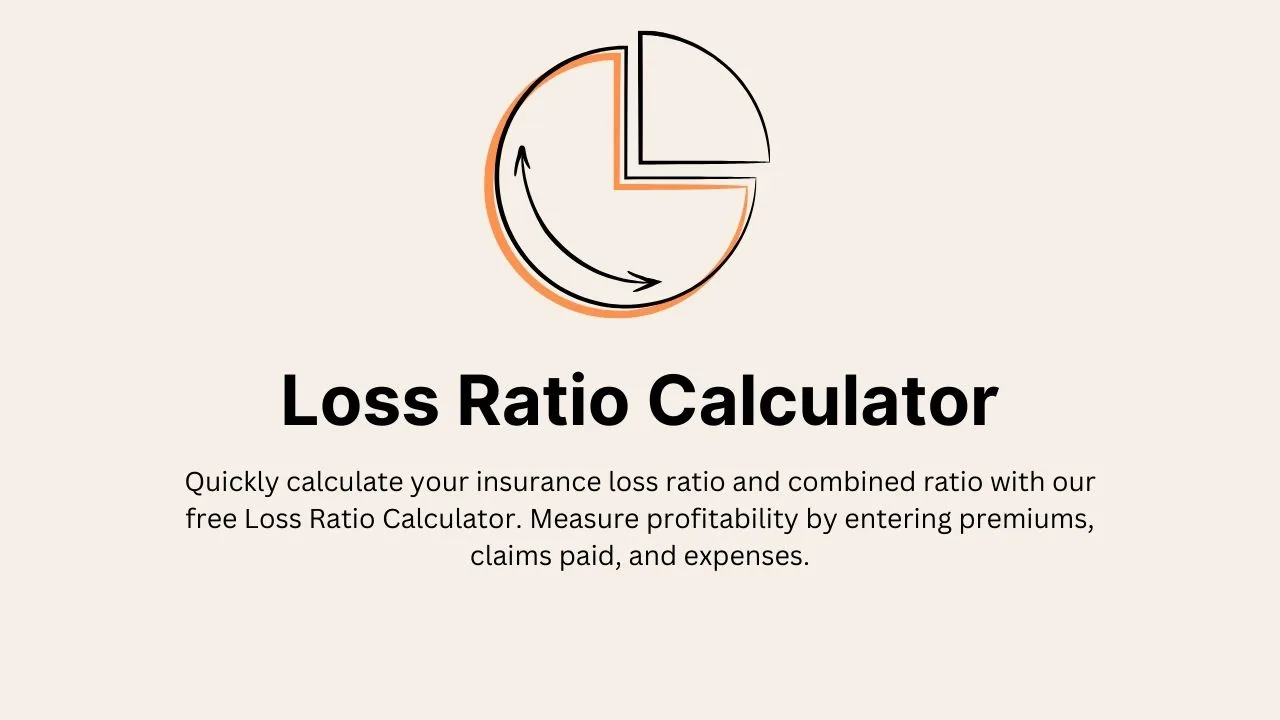Loss Ratio Calculator - Understand Your Insurance Profitability
Quickly calculate your insurance loss ratio and combined ratio with our free Loss Ratio Calculator. Measure profitability by entering premiums, claims paid, and expenses.
Profitability Analysis
Formula:
Loss Ratio = (Claims Paid + Adjustment Expenses) / Premiums Earned × 100
Combined Ratio = Loss Ratio + Expense Ratio
Loss ratio is a key performance metric in the insurance industry. It helps you understand how much of the premiums collected are being paid out in claims and related expenses.
Formulas & Equations
1. Loss Ratio
2. Combined Ratio
Combined Ratio adds underwriting expenses to the loss ratio. If underwriting expenses are not included, you can use:
For simplicity, if you only focus on loss ratio and LAE (which is often a part of total expenses), the calculator might assume:
Example Calculation
Suppose:
- Premiums Earned = $500,000
- Claims Paid = $300,000
- Loss Adjustment Expenses = $50,000
Step 1: Loss Ratio
Step 2: Combined Ratio (if no other expenses)
If you add a separate expense ratio (say 25%), then:
Interpretation
- Loss Ratio < 100% → Profitable on underwriting
- Loss Ratio > 100% → Paying more in claims than earning in premiums
FAQs
What is a loss ratio in insurance?
Answer: A loss ratio is the percentage of insurance premiums paid out in claims and loss adjustment expenses. It helps insurers measure how efficiently they are managing risk and payouts.
What is a good loss ratio?
Answer: A good loss ratio is typically below 100%, indicating the insurer is collecting more in premiums than it pays out in claims. A loss ratio of 60%–70% is considered healthy in many insurance sectors.
What’s the difference between loss ratio and combined ratio?
Answer: The loss ratio includes claims and related expenses, while the combined ratio adds underwriting expenses to the loss ratio. The combined ratio offers a more complete picture of an insurer’s overall financial performance.

Related Calculators
Help Improve This Tool
Your suggestions help us make better tools for everyone.